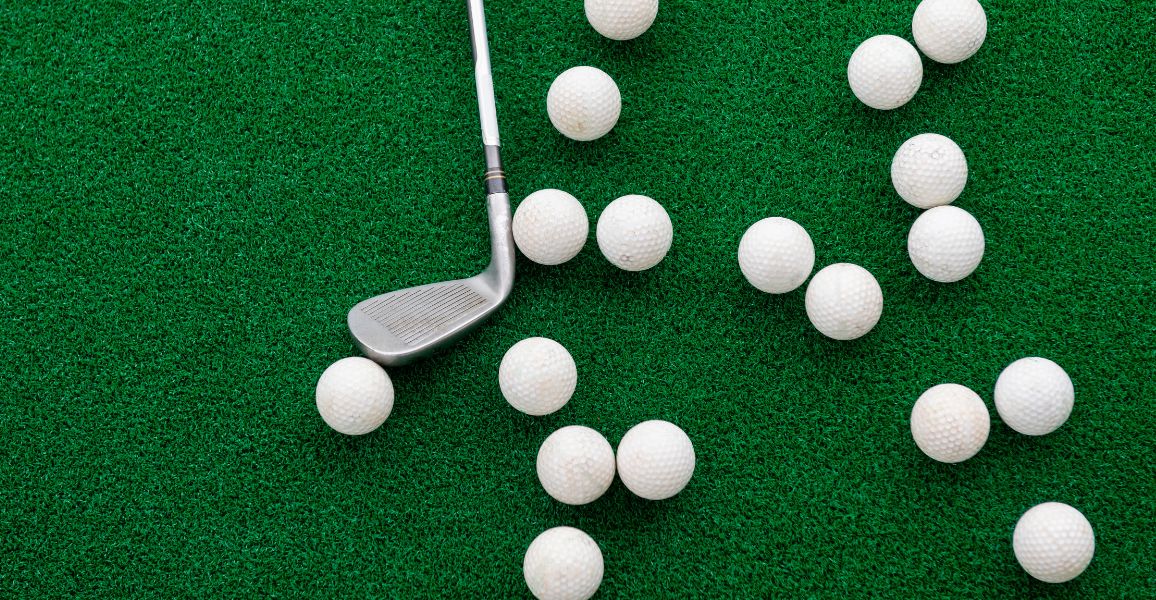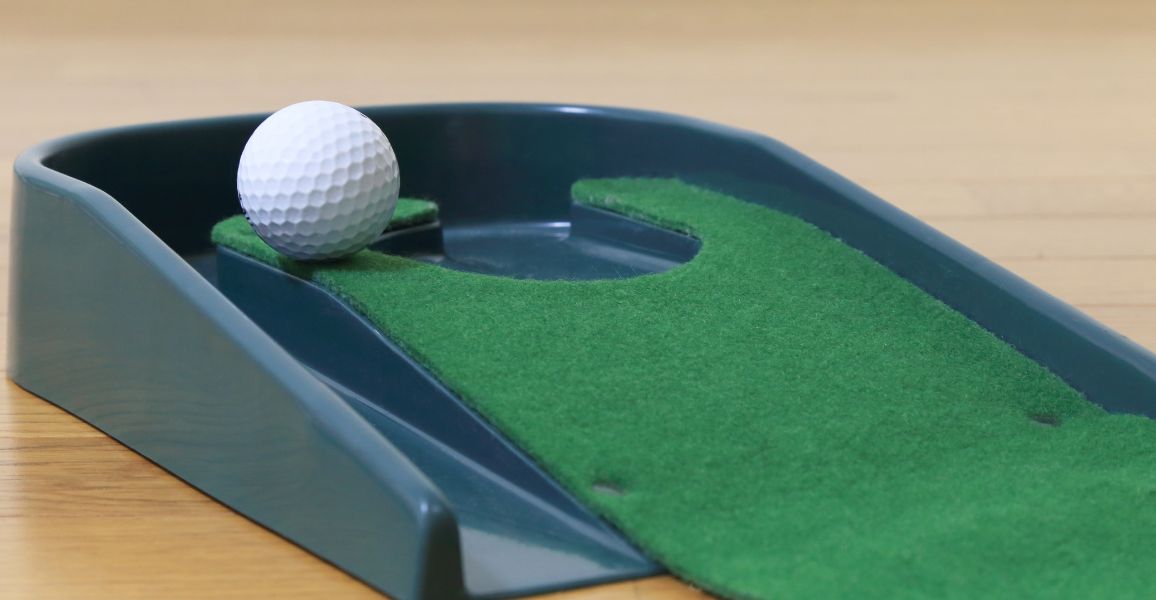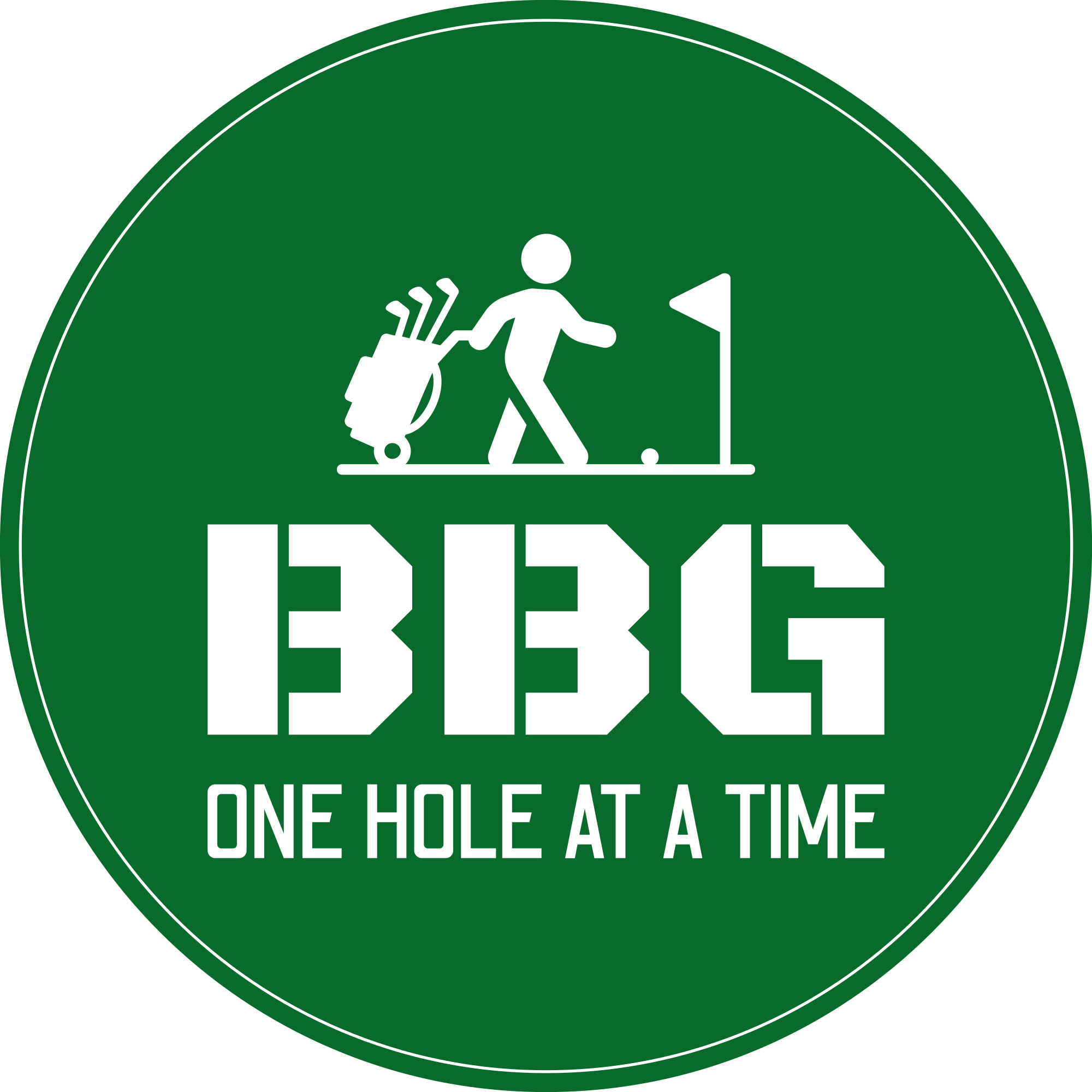It would help if you practiced golf more to improve, but getting to the driving range, booking in with your golf instructor, or the golf course isn’t always on the cards.
Practicing at home can help with this.
The more you practice golf, the better you will become at golf, even if sometimes it doesn’t feel like that.
Most people put it off because they don’t know where to start.
Below I’ve split the article into two depending on whether you have space for equipment.
All the drills are easy to do and can lead to you dropping countless shots from future scorecards.
How To Practice Golf At Home Without Equipment
Practicing your golf game at home without equipment can still be hugely beneficial.
Sure, having a high-tech launch monitor would make a difference, but that’s only in some people’s wheelhouse.
Equipment can be costly, and the space could not be there for a large net.
You might have kids that would make light work of your net, or you live in an apartment and don’t feel like dealing with noise complaints.
Whatever the reason, don’t worry; I’ve got you covered.
I’ll share with you some of my favourite drills you can use from the comfort of your own home.
Work On Your Grip

More often than not, amateur golfer’s wild shots are caused by not doing the basics right.
Having a weak grip is probably top of the list.
Most amateur golfers know this, but trying a firmer grip on the golf course for the first time and not working immediately is enough reason never to try again.
I remember when I first tried hitting balls with a firmer grip, and it felt like my wrist was about to snap.
Practicing golf grips at home can get you to a stage where it stops feeling uncomfortable.
Once it feels comfortable in your hands, you can implement it on the course or driving range.
Golf Swing Drills
There are plenty of ways to improve your golf swing and overall ball striking at home without hitting a golf ball.
Below I’ll share some drills you can do to improve your contact, compress your irons, fix a slice or hook, and posture.
Or checkout the below post if you need extra help:
How To Fix A Slice With A Driver
Working On Contact
You’ll want to start working on your contact if you’re going to strike your irons pure and pick up some extra distance.
Ideally, your club head should contact the ball first and the ground afterward.
Not only will this mean you gain extra distance, but it should reduce the number of golf shots you catch fat.
You only need enough space to make a full swing and a hand towel to work on this.
Increasing Swing Speed
Getting used to swinging faster is necessary to hit the ball further with control.
That said, swinging fast only to end up off balance and hopping on one foot is not the goal.
The goal is to swing fast, smooth, and have a balanced finish like you see the pros do effortlessly.
Method number one consists of you getting a club out of your bag and swinging that club as fast as you can. You don’t need a ball for this, either.
Swinging as fast as you can get you used to swinging and moving your body at that speed. Eventually, you’ll feel confident at high speeds.
The second method is like the first, but you will take two clubs and swing them together simultaneously.
The extra weight you move adds more resistance, so when you switch to one club again, it should feel like swinging a paperweight.
Fixing A Slice
Hitting the ball a little straighter is all we golfers want.
Most of us would be happy with a slight fade, not the round destroyer slice that clears two fairways.
This little at-home drill can help you achieve a power fade or draw and correct your swing path.
All you need to do is get a club headcover or anything else that won’t smash if hit and your golf club.
Place the headcover just above and to the right where you imagine the ball would be, and begin swinging.
If you hit the headcover, then that would have been a slice.
Keep swinging to avoid clipping the head-cover; it should help you fix that slice.
Practice Putting At Home

There is nothing wrong with using a stretch of carpet or rug to work on your putting.
It’s not putting green, but it can work.
Yes, it will be slower than the greens you’re used to playing on (hopefully), but you can still work on some fundamentals.
Things like ensuring your putter head goes back and forth in a straight line.
To achieve this, set up a small gate just behind the ball your putter must go through before contact.
You can also set up a smaller gate a few inches ahead of the ball to try and thread your golf ball through.
These drills ensure that after you pick your line, the putt goes where it’s supposed to be, and you don’t pull or push your stroke.
Check out my article on How To Improve Putting for a more detailed breakdown of games/drills you can try out.
Practice Chipping
If your backyard is big or small will decide what range and shots you can focus on with your wedges.
Before you start, consider a small golf mat to practice off to save your grass from being ripped up over time.
It happens, and to us golfers, a few divots in the backyard is a small price to pay for a better short game… the rest of the family probably won’t agree with us, though.
You could always blame it on some moles!
To get started, I would set up a target area in which you want your shots to end up. It can be a hula hoop, an old tire, a large towel, or a pole.
Once you know where you’re aiming, you want to get as many golf balls as possible into that area.

To get the most from your practice, try hitting different shots from the same spot and get them to all land at the target.
For example, you could hit 5 standard pitch shots, 5 lower pitch shots with the club a little back in your stance, and 5 higher pitch shots with the ball further forward in your stance.
Another drill is to set up a few targets getting gradually further away.
The goal is to chip to the first and work your way to the back, but the catch is if you miss any of the targets, you start from the beginning all over again.
It can be a little frustrating, but are you even golfing if you’re not frustrated?
Check out my article for Golf Chipping Tips if you’re interested in really dialing in your short game.
Golf Fitness
Getting fit for golf at home doesn’t have to be complicated, and it’s less intimidating than joining a gym if you’re new to fitness.
Working on overall fitness can help your golf game in many ways and lead to lower scores.. even without having a club in your hand!
To start your fitness journey for golf, you must focus on three core areas: core strength, balance, and flexibility.
You can start by doing bodyweight movements, using dumbbells or kettlebells, yoga, or just some old fashion stretching.
I’ll include a few videos below to give you a starting point for each area.
Core/Strength Exercises
Flexibility/Balance Excercises
Eventually, once you feel comfortable, consider joining your local gym to take your golf fitness journey to the next level.
Make sure to follow up these exercises with some gentle stretching.
Dial In Your Mental Game
I’m sure you know golf is a mental game.
Working on this aspect of your game doesn’t need any fancy equipment or rely on how much space you have.
You only need to get a golf book about the mental game and work on your visualization.
The good thing is that you can find plenty of these books online and come in audio formats.
Some people prefer to read an actual book, but if you’re anything like me, I’d like to listen to it while doing other things.
Below, I’ve included links to 3 of my favorite books to improve your mental game.
Zen Golf: Mastering The Mental Game
How To Practice At Home Using Equipment
If you’re lucky enough to have a backyard or a large enough room, you can enjoy the luxury of using equipment.
Home equipment gives you an advantage over golfers who can’t get a full swing of a golf club without breaking something at home.
However, the advantage of using equipment only works if you correctly practice golf at home.
Keep reading below to learn how to improve your golf game and easily shave strokes off your round from home.
Using A Golf Net
Hitting practice balls into a net at home is one of the best ways to practice your ball-striking skills.
The issue is that you don’t see the full shot play out.
Constantly mishitting the ball into a net can engrain bad habits.
Impact Stickers Or Spray
When you hit into a net, most golfers feel most of their shots are good.
But how are you supposed to know?
Impact stickers or sprays will show you how you’re hitting the ball.
Focusing on hitting the center of the clubface will turn you into a better ball striker.
However, hitting the sweet spot doesn’t always mean the ball will go straight…
How can you tell if you sliced the ball into the net?
Pay Attention To How The Ball Comes Back To You
Here is a secret I picked up from an old course pro.
The secret lies in the direction your golf ball rolls off the net after impact.
For example, if you hit a big slice, the ball will move to the right once it contacts the net.
The opposite will happen for a hook… and if it goes straight, it will stay straight.
Some nets return the ball to you, and this tip works well.
Work On Your Swing Tempo
Something that can lead to more consistent strikes and lower scores is better swing tempo.
While striking balls, try to find a rhythm to your golf swing. Find a tempo that you can comfortably strike without finishing off balance.
Balance and consistency should always take priority over speed in a golf swing.
I’ve added links to the above products below if you’re wondering where you can get them:
Using A Launch Monitor Or Simulator
Very little to this method. All you need is a practice net and a launch monitor.
Most launch monitors’ prices range from $500-$2500.
The results from the $500 monitors will differ from the $2500 monitors.
Higher-end launch monitors will give you more golf swing, swing path, and ball flight data.
When using a launch monitor, you don’t use any guesswork.
You need to decide if it’s a worthy investment or not.
Check out this post which can help you make that decision:
How Accurate Are Golf Simulators? Are They Worth It…
If you want to compare the differences in features they offer yourself, check out the two I’ve linked below.
Using A Putting Mats

Having a putting mat is a step up from rolling golf balls on your carpets.
Practice on the carpet if you don’t have a mat, but you’ll get a better feel using mats.
Depending on what matt you go for will make a difference in the quality of putting practice you can do.
The more premium mats come with distance markers and lines for your ball or putter head to follow.
You can, of course, use a more fundamental and cost-effective option but similar to the launch monitors, you get what you pay for.
I practiced using a coffee mug and some carpet, but I noticed the difference when I upgraded to an actual matt.
